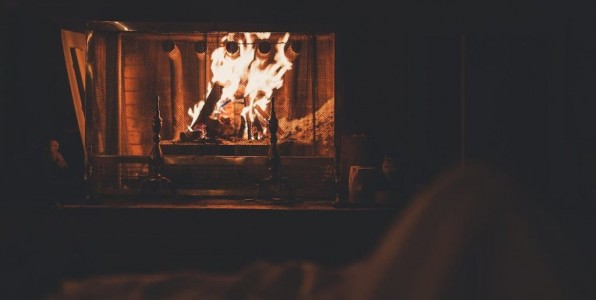Sustainable Fireplaces: Which Fireplace Is the Right Choice?

Sustainable Fireplaces: Which Fireplace Is the Right Choice?
The post Sustainable Fireplaces: Which Fireplace Is the Right Choice? appeared first on UK Construction Blog.
Given that nearly 40% of global carbon emissions are generated by buildings, it’s more important than ever that buildings are designed and built in a sustainable way.
Not only does this reduce environmental impact and allow building owners to fulfil their legal obligations, but it also helps improve the health of occupants.
Previously, we’ve explored several ways the construction industry can make their projects more sustainable. In this article, we’re going to look at the importance of fireplaces and why it’s crucial to choose a sustainable option when designing a building.
Wood burning fireplaces: the risks
If a client wants a fireplace installed in a room, they have several options:
- Wood-burning fireplaces
- Gas stoves
- Electric fires
- Bioethanol fireplaces
These are all very popular choices. Unfortunately, not all of these fireplace options are environmentally friendly.
Take for example, the old-fashioned wood-burning fireplaces. While these fireplaces are well-loved for the heat they generate and the cosy ambience they provide, they’re not always a green option. Wood-burning fireplaces generate a lot of smoke, soot, and ash, which can have an adverse effect on the environment around us and lead to poor air quality.
The UK Government has actually taken some action to reduce the damaging impact of wood-burning fireplaces on the environment, such as the launch of smoke control areas and the banning of burning wet wood.
However, this is still not enough to protect our living space.
The dangers of particulate matter

As well as smoke, soot, and ash causing a detrimental effect on the environment, wood burners can also be highly dangerous to human life.
Wood-burning fires produce a substance called particulate matter (PM). This is a mixture of solid particles and liquid droplets containing dust, dirt, soot, and smoke. Some PM droplets are so tiny that they can settle in the lungs and cause health problems.
Data shows that while the amount of PM from wood-burning fireplaces is on the decline (due to the legislation that is in place), these fireplaces still emit more pollution than road traffic.
PM is even more of an issue in modern buildings that have been designed to be energy efficient and to retain heat. As these buildings are more airtight, it means PM can’t escape outdoors as easily, resulting in low air quality. This can lead to symptoms like headaches, dizziness, tiredness, and an increased risk of debilitating respiratory conditions.
Eco-friendliness vs warmth: is there a trade-off?
Many people think that an eco-friendly fire implies an inauthentic one. Take, for example, electric fires. Electric fires are a fantastic sustainable option as they don’t generate fumes or any particulate matter, and they come in a range of designs and styles to suit every type of building.
Having said all this, electric fires do come with two key drawbacks. Firstly, they don’t generate a lot of heat. A typical wood burner has a maximum heat output rating of between 5 to 8-kilowatt hours (kWh), while with an electric fire, you can expect about 2kWh. This means that while a wood-burning fire can efficiently heat multiple rooms of a building, an electric fire can only warm one at a time.
Secondly, electric fires don’t offer the ambience that typical wood-burning fires do. An electric fire doesn’t crackle or hiss and doesn’t offer much in the way of dramatic dancing flames.
Bioethanol fires: a sustainable alternative
If you want to offer clients an environmentally-friendly option that provides an authentic flame, a bioethanol fireplace (also known as a biofire) could be a fantastic choice.
These fireplaces run exclusively on bioethanol fuel. Bioethanol is a renewable energy source made from plant-by products like corn, wheat and sugarcane. As it is made from a source that is quickly and easily replenished, this makes bioethanol fuel very eco-friendly.
The main benefit of bioethanol is that it burns cleanly without releasing dangerous by-products like particulate matter. The only emissions produced are heat, water vapour, and a very small amount of carbon dioxide – the same amount as two burning candles.
This means no damage to the outdoor environment and no reduction in indoor air quality. With a bioethanol fire, you get a real, crackling flame without the environmental impact.
Another benefit of bioethanol fires from a construction perspective is that they’re easy to install. You don’t need a flue or chimney like you do with a wood-burning fire or a power source like an electric fire.
This makes them easy to place anywhere in a room. If your client fancies a change, they can pick their bioethanol fire up and move it somewhere else!
At this point you may be asking, do bioethanol fireplaces keep you warm? Bioethanol fireplaces are not designed to be a primary heating source like a wood-burning fire is. We would not recommend replacing the central heating system with a bioethanol fireplace.
That said, considering how small they are, biofires do pack a punch. You will be able to get the most out of them in smaller spaces or alongside another heating source.
We can all contribute to environmental sustainability
When managing a construction project, it’s essential to consider the smaller details and how they can impact the eco-friendly nature of a building. Even a minor change to the process can have a significant effect on the rest of the project.
Of course, the client always has the final say in the type of heating source and fireplace they want to deploy for their project. If you believe sustainability is important to them, it’s vital to offer advice and a clear steer.
If your client desires an authentic flame in their fireplace but also wants something green, sustainable and not harmful to the environment, a bioethanol fire is easily the best choice out there to tick all of these boxes.
Comments are closed